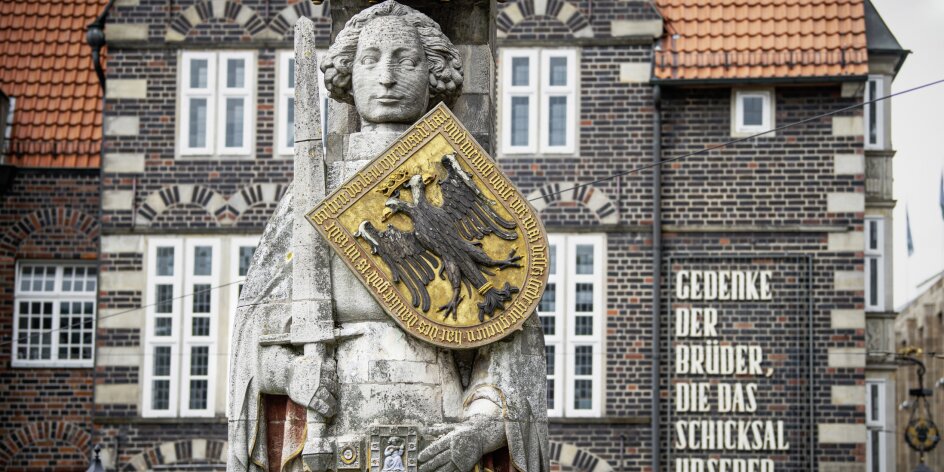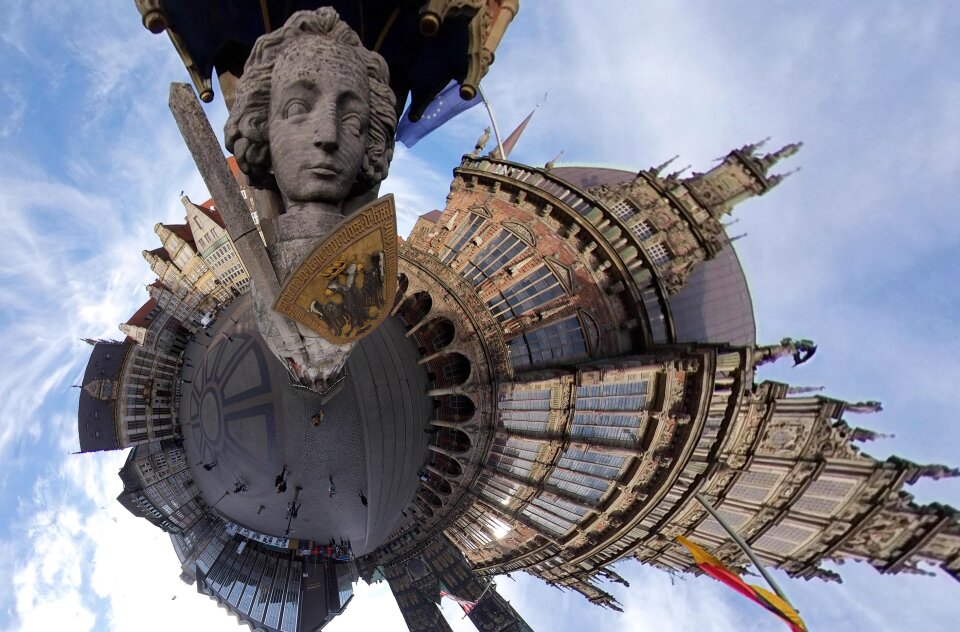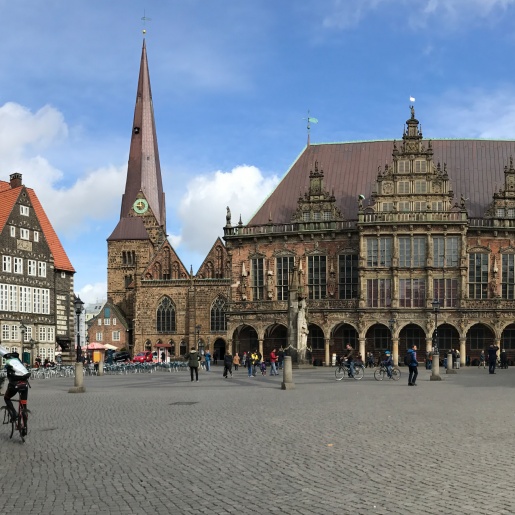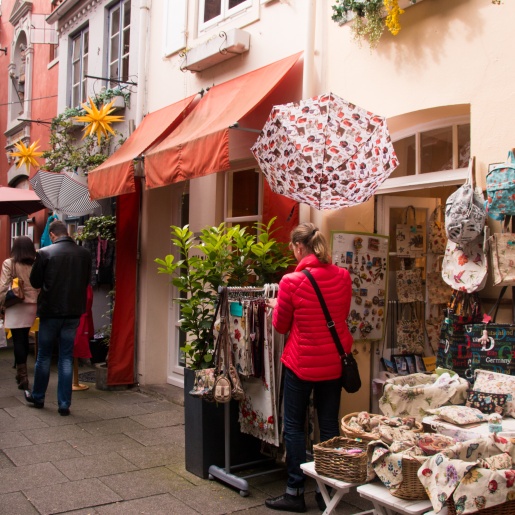Roland Statue Bremen

© WFB / Carina Tank
In 1404, the stone Roland was erected in front of Bremen's town hall. From the very beginning, it was a symbolic figure for the city's "freedoms" and rights. Since 2004, Bremen's landmark has shared a place on UNESCO's World Heritage List with the well worth seeing Town Hall.
The most Important Information at a Glance:
Knight statue on the market square
Built in 1404
Height: 10 metres
UNESCO World Heritage Site
Bremen's Landmark
One of Bremen's best-known landmarks is the 10-metre-high Roland statue in front of the historic town hall on the market square. Bremen's Roland has stood guard over the city's freedom and rights since 1404. It is not only popular with Bremen residents and tourists, UNESCO experts have declared it the most representative and beautiful Roland monument in Germany. The Roland statue and the town hall have been on the UNESCO World Heritage List since July 2004.

© WFB / MKA
Profile

The Legend of Emma von Lesum - A short Version
The widowed Countess Emma von Lesum was considered pious and charitable. Her kindness of heart was known among the burghers, a quality that caused her brother-in-law Duke Benno of Saxony to worry about his inheritance.
On one occasion, the countess granted two burghers more grazing land for their cattle, "as much as a man could walk around in an hour". Her cunning brother-in-law chose a beggar for this measuring march, who could not move without outside help. Countess Emma, however, calmly put her hand on his head, prayed and told him to try. He did not succeed in walking, but he crawled. The townspeople retreated in disappointment, having little hope that the beggar could "crawl" a particularly large grazing area. However, the "cripple" crawled steadily on and in the evening they were surprised at the large area. Today we still know this area as Bürgerweide. The people of Bremen did not forget the "cripple" and honoured him at the feet of Roland.
You might also be interested in...

Market Square
© privat / JUA

